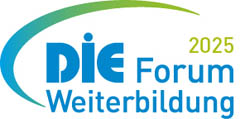Creating Truly Active Contents
 Ljubljana (SI), November 2008 - Creating and re-purposing content in a cost-effective and attractive manner is often top of the list when it comes to the challenges faced by eLearning providers - regardless of sector. Primoz Luksic, Institute of Mathematics, Physics and Mechanics (IMFM) in Ljubiljana, explained the difference between creating interactive and truly active content to CHECK.point eLearning.
Ljubljana (SI), November 2008 - Creating and re-purposing content in a cost-effective and attractive manner is often top of the list when it comes to the challenges faced by eLearning providers - regardless of sector. Primoz Luksic, Institute of Mathematics, Physics and Mechanics (IMFM) in Ljubiljana, explained the difference between creating interactive and truly active content to CHECK.point eLearning.
What does it take to create truly active and attractive content?
Primoz Luksic: The main misconception is that interactivity alone is enough when trying to create good content. Sure, integrating multimedia and places for user interaction makes the content look attractive; however it mostly promotes user-to-content interaction. Truly active content is co-constructed by learners, teachers, and others together. To allow this to happen, we have to think outside the box and not concentrate solely on the teacher to create the content. Rather, we should focus on building an eLearning framework and have the learners construct the finished content of the course.
One possible approach is to use a wiki, which is basically a collection of web pages, designed to enable anyone who accesses it to collaborate as well as review, supplement, and extend the available content. In this sense, it invites the students to become truly involved in the courses they take, as they can modify and improve the course materials by themselves. When conflicts arise, they can be discussed on the discussion page that accompanies the content. In addition, the history of modifications enables anyone to see and possibly reverse the changes that have been made.
What are the main differences and traps when comparing teachers' and learners' perspectives?
Primoz Luksic: When dealing with eLearning in practice, we've noticed that the teachers are mainly concerned with the quantity of the contents, e.g. they want to provide as much information on the subject as possible online. While being mostly well-intentioned, these activities sometimes produce nothing more than a collection of web links. The reasons for such behavior range from slow acceptance of new technologies to the lack of appropriate tools for content creation and organization.
The learners on the other hand want access to quality content accompanied by examples and possibilities for discussion. Their view of learning content includes a place where questions are asked and answered. However, the loss of personal communication, e.g. in cases of fully online courses, can lead to loss of motivation since it is more difficult to provide guidance and inspiration online than in a real environment.
Are there specific challenges in mathematics, physics, and mechanics to provide students with attractive eLearning content?
Primoz Luksic: The challenges we are faced with when creating contents for the sciences mentioned, and in fact most of the natural sciences, range from content creation to knowledge examination. In natural sciences, the learning process is often accompanied by experiments, which can provide a valuable or even a key reference on a subject. Bringing these experiments online has become possible with the use of video and animations as well as with the spread of broadband internet connections. The price of audio/video equipment and the availability of processing software have reduced this problem (in most cases) to only the will of the teacher to offer such contents.
The extraction of knowledge learned from the contents, however, seems to have been overlooked. While learning environments and specialized content development tools that support the creation of tests and quizzes exist, they are inadequate for real use in the natural sciences.
This is because when we pose a question, we want to check if the learner really understands the problem and not only knows how to solve it given specific parameters. Therefore, there is a need for systems that provide a different set of input data for the same problem accompanied by the right answers (possibly with feedback) for each set.
Which obstacles do you see for universities in creating and re-purposing content in a cost-effective and attractive manner?
Primoz Luksic: There are many obstacles, starting with the tools for content creation. They can be rather expensive and inefficient, not to mention the steep learning curve they present when trying to create attractive content. The main requirements for content are interoperability and reusability. They have been addressed with the appearance of standards and specifications like SCORM.
However, there is still a long way to go. For example, they do not include means for group activities, e.g. forums, groups, etc., which are necessary for bringing people to people. Another difficulty is in learning environments, which rarely support the standards as they claim to - this is especially evident with some open-source platforms. But last, and possibly the greatest obstacle, lies in teachers themselves and in their lack of interest in creating this type of content or reticence in accepting the concept of eLearning in general.
Session CCC53
Primoz Luksic: "Creating Truly Active Contents: The Teacher vs. the Learner Perspective"
Friday, December 5th, 2008, 11:45 - 13:15, Charlottenburg II








